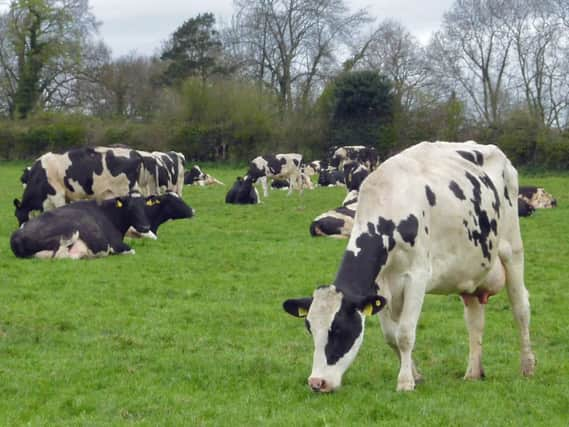DARD Management Notes: Dairying


Don’t be afraid to graze cows on a grass cover of 2500 kg dry matter per hectare (the ankle of your boot). Graze grass down to 1500 kg dry matter per hectare (the heel of your boot). Start grazing for three hours and build this up to half days over a period of a week to ten days.
Aim for an initial grazing rotation of between 25 and 30 days to allow completion of your first grazing cycle before grass covers get too heavy. A surge in growth could mean by the time you reach the end of the first grazing cycle covers are too heavy for cows to graze out cleanly, making it more difficult to maintain grass quality throughout the grazing season.
Future Herd at Greenmount.
Advertisement
Hide AdAdvertisement
Hide AdAt Greenmount Campus the aim is turnout some of the Future Herd cows to the driest fields when ground conditions allow. The grazing group will consist of cows back in- calf producing less than 30 litres and more than 100 days in milk. Fields will be set up with different entry and exit points. Cows will go out with an edge to their appetite and graze for two to three hours, targeting 5 kg grass dry matter intake. A grazing group of 60 cows requires 300 kg of grass dry matter.It will therefore take three days for this group to graze a one hectare paddock with a pre-grazing cover of 2500 kg dry matter to the target residual cover of 1500 kg dry matter per hectare. To achieve this, the group will be offered one third of a hectare daily and a back fencer will be used to subdivide the paddock to improve grass utilization.
The Future Herd is a high yielding herd that is successfully grazed. Last year 40 cows were grazing on the 10th March. From mid-March to mid-April cows were drafted at morning milking and lower yielding cows went straight out to graze. The size of the grazing group increased gradually and by mid-April the entire herd was grazing for half a day. By the end of April a group of cows were grazing full-time.
Milk from forage: Improving milk from forage is critical at current milk price. In most cases, March grass has a higher energy value than the silage cows were fed. Full March grazing has the potential to produce 20 litres of milk. Getting your cows out to grass in March and good management will allow you to increase your milk from forage. Practically this requires you to increase the M+ in the parlour computer feed settings by 3 to 4 kg of milk at turnout. The few hours grazing after morning milking will save about 1.5 kg of concentrate per cow daily, replacing over half a tonne of concentrate a week for 50 cows. Continue to adjust the M+ in the parlour computer feed settings as cows move to full- time grazing. In addition to the immediate savings in concentrate costs there should be improvements in milk protein and yield.
The message is clear. Get some cows out grazing as soon as conditions allow. Adjust the M+ in the parlour computer feed settings at turnout as cows move to full-time grazing. Have your grazing rotation fully established by the third week in April.